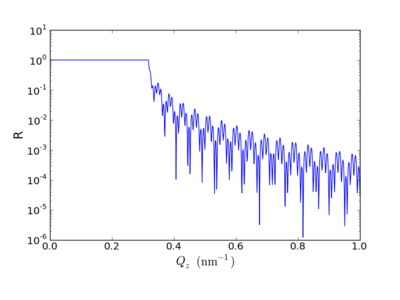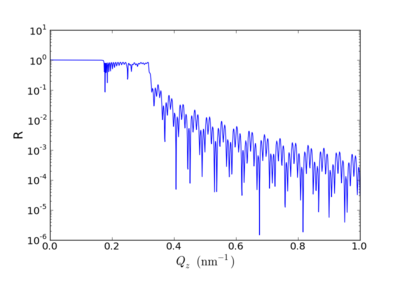Reflectivity oscillations below critical angle
In reflectivity experiments, when the angle of incidence is below the critical angle, the beam experiences total external reflection. Thus, the reflectivity goes to 100% () for any , or for .
However, one sometimes sees oscillations of the reflectivity even below this angle (especially in x-ray reflectivity, though it is also possible in neutron reflectivity). These oscillations can be thought of as waveguide modes appearing while the reflectivity angle is in between the critical angle of the substrate, and the critical angle of the film. Notably, these variations are only visible (in reflectivity) due to the non-zero absorption of the film. However, even a very small absorption can be measured, because the waveguide modes inherently travel through the film many times.




